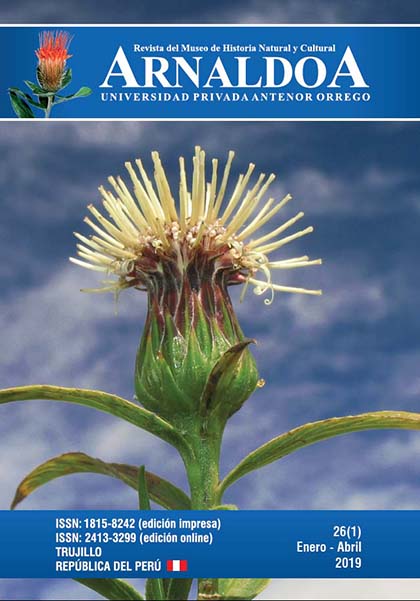EFECTO IRRITANTE IN VITRO DEL GEL ELABORADO CON EXTRACTO ACUOSO DEL MESOCARPIO DE HYLOCEREUS MEGALANTHUS(CACTACEAE) “PITAHAYA” POR EL MÉTODO HET-CAM
DOI:
https://doi.org/10.22497/1073Abstract
Resumen
En el presente estudio, se evaluó in vitro el efecto irritante del gel elaborado con el extracto acuoso del mesocarpio de Hylocereus megalanthus (Cactaceae) “pitahaya”, empleando el método de HET-CAM para demostrar seguridad y eficacia de la formulación. La “pitahaya” fue recolectada en la provincia de Huaral, departamento de Lima, en el sector denominado Virgen de la Esperanza, a una altitud de 190 m s.n.m. El gel fue preparado a base de carbopol, trietanolamina y agua desionizada; su preparación tuvo lugar en el Laboratorio de Industria Farmacéutica de la Facultad de Ciencias Farmacéuticas y Bioquímica de la Universidad Inca Garcilaso de la Vega. Para la elaboración del extracto acuoso, se utilizaron 300 g de mesocarpio de Hylocereus megalanthus “pitahaya” por litro de agua, concentrándose el solvente con ayuda del rotavapor. Las concentraciones de gel preparado con el extracto acuoso fueron del 0.5 % y 1 % y se emplearon NaOH 0.1N y LSS como control positivo. El estudio fitoquímico determinó la presencia de alcaloides, saponinas, flavonoides, quinonas, glucósidos, terpenoides y fenoles. Las formulaciones farmacéuticas elaboradas con el gel mantuvieron intacta la membrana corioalantoidea sin provocar efecto irritante; el control a base de hidróxido de sodio y lauril sulfato de sodio (LSS) resultó ser irritante moderado y severo. Según el método de HET-CAM, el índice de irritación obtenido para todas las formulaciones de extracto acuoso del mesocarpio de Hylocereus megalanthus “pitahaya” permitieron clasificar al producto como no irritante. Se espera utilizar la formulación en ensayos de fase I.
Palabras clave: efecto irritante, extracto de “pitahaya”, gel, mesocarpio, membranacorioalantoidea
Â
Abstract
In this study, we evaluated in vitro the irritant effect of the gel made with aqueous extract of mesocarp of Hylocereus megalanthus (Cactaceae) “pitahaya” using the HET-CAM method to demonstrate the safety and efficacy of the formulation. The pitahaya fruits were collected in the province of Huaral, department of Lima, in the area called Virgen de la Esperanza, at an altitude of 190 meters above sea level. The gel was prepared based on carbopol, triethanolamine and deionized water; its preparation took place in the Pharmaceutical Industry Laboratory of the Faculty of Pharmaceutical Sciences and Biochemistry of the Inca Garcilaso de la Vega University. For theelaboration of the aqueous extract, we used 300 g of mesocarp of Hylocereus megalanthus “pitahaya” per liter of water, concentrating the solvent with the help of a rotavap. The gel concentrations prepared with the aqueous extract were 0.5 % and 1 %, and NaOH 0.1N and SLS were used as a positive control. The phytochemical study determined the presence of alkaloids, saponins, flavonoids, quinones, glycosides, terpenoids and phenols. The pharmaceutical formulations made with the gel kept the chorioallantoic membrane intact without causing an irritant effect; the control based on sodium hydroxide and sodium lauryl sulfate (SLS) turned out to be moderate and severe irritant. According to the HET-CAM method, the irritation index obtained for all aqueous extract formulations of the mesocarp of Hylocereus megalanthus “pitahaya” allowed classifying the product as nonirritating. The formulation is expected to be used in phase I tests.
Keywords: irritating effect, pitahaya extract, gel, mesocarp, chorioallantoic membrane.
Downloads
Downloads
Published
Issue
Section
License
By submitting a paper to the journal, it is understood that the authors agree to transfer the publication rights to the journal once it is accepted.
It is permitted to share and adapt the contents of this journal in any medium or format always if the original source is properly cited and there are not commercial purposes.







